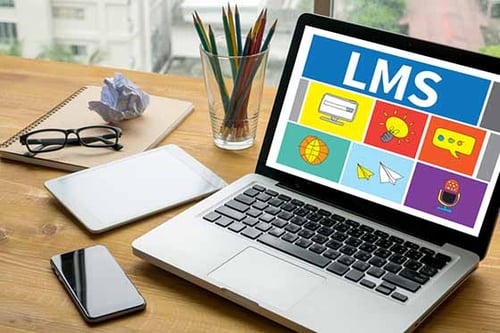6 Best Practices for Successful Corporate Change Initiatives
Tips From Your corporate training services provider
Corporate change is not easy-but you already know that.
Planning for the best strategy to effectively train up employees for a new change can be a challenge.
There are many factors to consider like available resources, the target audience, timing and milestones. Are you going to work with a fully internal learning team or look to external partners to assist? The successful integration of new change is important to ensuring long term success of the organization. In addition, fostering a culture that embraces change management is also important. Implementing these things successfully will provide smooth transitions ongoing updates to technology, sales enablement and global business practices continue to accelerate the need for corporate change.
With over 30,000 contract professionals globally, we can assist your team with local talent to support your unique and target training needs.
Finding the right mix of best practices and the optimal blend of internal and external resources and for success can make this change easier.
In a study conducted by TrainingIndustry, Inc., 200 Learning Leaders were asked for their recommendations on best practices that impacted their organization’s ability to achieve successful change initiatives.
There are five main types of change including Organizational-Wide, Transformational, Personnel, Unplanned and Remedial.
Taking from expertise in the Banking/Finance, Technology and Business Services/Consulting industries, here are the top 6 best practices for effective change-no matter which of the five you’re going to be implementing.
#1 Collaboration is Key
The most important factor to successful organizational change management is collaboration. It is important to have open dialogue with business leaders, subject matter experts (SMEs), and employees/end-users early and often to ensure buy in and support for the initiative.
This should start even before the project is underway, to ensure that you have included all stakeholders that will be affected and who can affect the outcome of the project.
Remember, someone in IT who may be developing a customized software for someone in the HR department will see the program, training and usability very differently from the final user. The project team needs to get input on the onset. This can prevent a lot of amendments that may be needed down the road and address important learning points for the training program to follow.
#2 Customize Delivery
Customizing your learning experiences has never been more important. Changes in technology as well as generational differences in the workplace (i.e. Millennials and Gen Z) have great impact on your learning delivery strategy.
Successful Learning Leaders highly recommend delivering training how the learner wants it, ensuring to provide the training in a user-preferred format and customize the content to better meet each learner’s needs.
For example, if your change initiative involves new technology for your customer service and sales teams who don’t have the capacity to sit in a long in-class session, you may want to strongly consider the power of eLearning and microlearning modules for support. This way you can continue to offer on-demand learning as the need arises.
Having a strong learning management system (LMS) in a must-have tool for effective customized training. The system will provide further customization options and give the organization detailed insight into the learning habits and success levels of each training program.
FREE DOWNLOAD: 8 THINGS YOUR LMS SHOULD DO FOR YOU
#3 Clear Change Management Strategy
Heading into and learning and development program blindly is dangerous-but doing so with a large change initiative is detrimental to success. A third best practice includes working with leadership and stakeholders to devise a comprehensive training/change management strategy, aligning the strategy with long-term business goals.
Two of the most common challenges during the strategic planning phase are: scheduling changes and delays and a lack of consideration for strategic planning the project timeline.
FREE DOWNLOAD: 10 KEY QUESTIONS YOUR TRAINING NEEDS ASSESSMENT SHOULD ANSWER
#4 Consistent Communication
Success is also highly dependent on the ability for change managers to clearly communication to all stake holders consistently and throughout the entire change process.
Rather than working on new technology for example and then springing the change over on your teams, it is important to let them know about the change coming down the pipeline and more importantly to get their input to ensure a smoother transition and user-experience.
Try to use different methods of communication as well. Is a Town Hall important when announcing a new merger or acquisition versus simply sending out an email? Will posters in common areas of the end users help ease them through the process and keep them up to speed on what’s coming up? Keep your audience in mind and the best communication ideas will follow.
#5 Secure Resources Quickly
Another best practice includes identifying, evaluating and securing necessary resources as early as possible. These can include things like funding, SMEs/external resources and technology.
In a busy organization where the learning department, IT, HR and other affected departments have many ongoing projects, your change initiative could be in jeopardy of delays or dismal results if milestones are cut or messaging seems truncated.
Organizations surveyed noted that the most common factors that negatively impact training are: conflicting priorities (58.8% of the time) and delays and timeline issues (44.8% of the time).
#6 Establish Training Metrics
Finally, ensure success by developing and designing proper training metrics and feedback mechanisms for that programs can be modified quickly and easily as needed. This will become part of your training needs assessment when going through the strategic phase and can be done by a qualified and knowledgeable instructional designer on the team. Working with additional SMEs and stakeholders, however, is still important. Communicating these metrics to understand the ability for the training to meet them as well as provide the right training along necessary timelines is also important to ensuring success.
Overall, most organizations that successfully implement large change initiatives into the organization do not do it 100% alone. 94.5% of the surveyed Learning Leaders said they had partnered with a corporate training company like TrainingFolks or an individual who has experience with their specific type of change on their project.
If you are embarking on a new technology rollout, a merger or acquisition or if its time to scale up with experienced training professionals contact TrainingFolks today. The team can assist with your training needs assessment, design, development or delivery needs regardless of change initiative.




